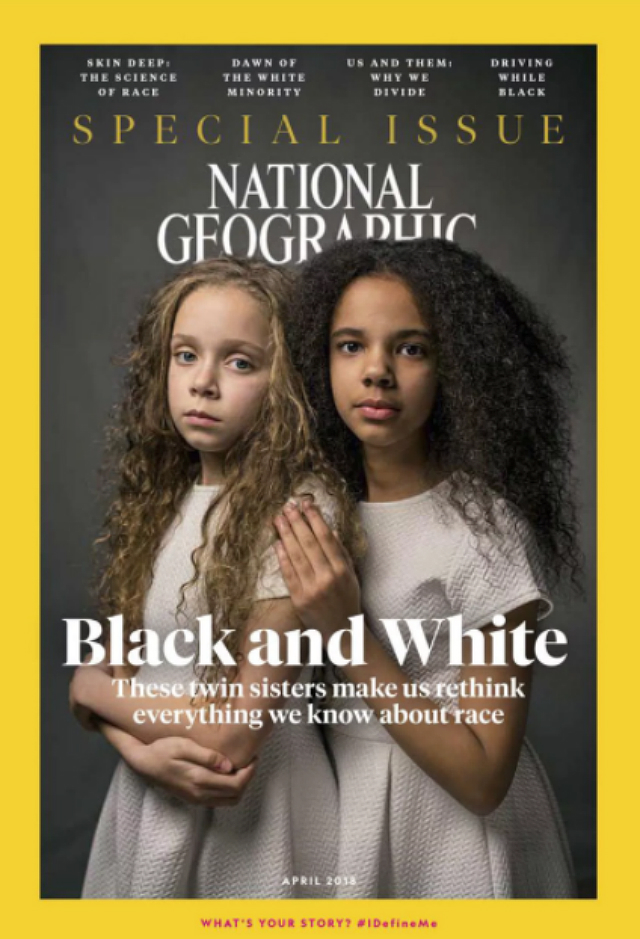What is the best way to address racism? Own up to your mistakes. National Geographic seeks to do just that with its latest issue series that delves into the concept of discrimination.
“I knew when we looked back there would be some storytelling that we obviously would never do today, that we don’t do and we’re not proud of,” Susan Goldberg, editor-in-chief of the magazine, reveals. “It seemed to me if we want to credibly talk about race, we better look and see how we talked about race.”
The first issue in National Geographic’s series features bi-racial twins who are biological sisters yet very different in appearance. The magazine reveals that the girls have sparked a re-imagination of race that vastly differs from the stereotype that National Geographic has helped perpetuate over the years.
“Until the 1970s National Geographic all but ignored people of color who lived in the United States, rarely acknowledging them beyond laborers or domestic workers,” Goldberg explains in her editor’s note. “Meanwhile it pictured ‘natives’ elsewhere as exotics, famously and frequently unclothed, happy hunters, noble savages — every type of cliche.”
One issue of the magazine went so far as to call people of color “savages” who ranked “lowest in intelligence of all human beings.” Now, how’s that for biased?
“People of color were often scantily clothed, people of color were usually not seen in cities, people of color were not often surrounded by technologies of automobiles, airplanes or trains or factories,” John Edwin Mason of the University of Virginia says of National Geographic’s depiction of non-white individuals. “People of color were often pictured as living as if their ancestors might have lived several hundreds of years ago and that’s in contrast to westerners who are always fully clothed and often carrying technology,” he added.
Despite racism and body-shaming, Mirna Valerio continues challenging stereotypes and inspiring others to do the same https://t.co/xPeSsWBvnZ
— National Geographic (@NatGeo) March 7, 2018
Looking at the past should help determine a better future. Susan Goldberg certainly hopes such is true for National Geographic. The editor-in-chief hopes that the magazine’s year-long series about race will help mend wounds and lead to a better understanding of all people.
“The coverage wasn’t right before because it was told from an elite, white American point of view,” she shares. “I think it speaks to exactly why we needed a diversity of storytellers.”
Check out the latest issue of National Geographic in retail stores nationwide!








